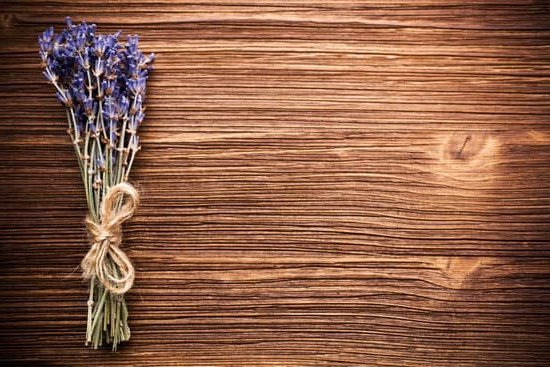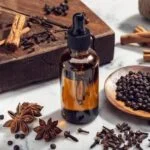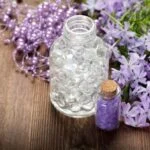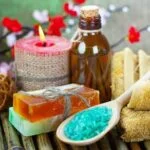Aromatherapy massage is a holistic treatment that combines the benefits of touch therapy with the use of essential oils derived from plants. The practice dates back centuries and has been recognized for its therapeutic properties in promoting relaxation, easing stress, and enhancing overall well-being. But what does an aromatherapy massage involve exactly?
The concept of aromatherapy revolves around the belief that inhaling the aroma of certain essential oils can stimulate brain function, impacting emotions and memory. When these oils are used in conjunction with massage techniques, they can penetrate the skin and enter the bloodstream, providing both physical and mental benefits. This unique combination of touch therapy and aromatics has gained popularity as a natural remedy for various ailments.
During an aromatherapy massage session, specific essential oils are chosen based on their individual properties to target different issues or promote specific effects. The therapist will use specialized techniques and movements to deliver the oils into the body, creating a relaxing and invigorating experience for the recipient.
As we delve deeper into the world of aromatherapy massage, we will explore its history, various essential oils used, specific techniques employed, health benefits associated, preparation tips, what to expect during a session, aftercare recommendations, and more.
History of Aromatherapy Massage
Aromatherapy massage has a rich history that dates back thousands of years, with roots in ancient civilizations like Egypt, China, and India. In these early cultures, essential oils were used not only for their fragrant properties but also for their therapeutic benefits.
The concept of aromatherapy as we know it today emerged in the early 20th century when French chemist Rene-Maurice Gattefosse coined the term “aromatherapy” after experiencing the healing properties of lavender oil on his burns. This paved the way for a deeper exploration of essential oils and their applications in massage therapy.
Origins of Aromatherapy Massage
The practice of using aromatic oils for therapeutic purposes can be traced back to ancient Egypt, where plant extracts were combined with olive oil and used for medicinal and cosmetic purposes. The Egyptians believed in the power of plants and their ability to heal both the body and mind.
Similarly, in ancient China, herbal medicine incorporating aromatic plant oils was a common practice to balance energy flow and promote overall well-being. In India, Ayurvedic medicine has long utilized aromatic herbs and oils in traditional massage techniques to harmonize the mind, body, and spirit.
Aromatherapy Massage in Modern Times
As aromatherapy gained popularity around the world, particularly in Western countries, aromatherapy massage became a sought-after holistic treatment option. Today, trained practitioners blend essential oils selected for their specific properties with carrier oils to create customized blends for each individual’s needs.
The combination of gentle touch with the inhalation of aromatic scents during a massage session can help relax muscles, reduce stress levels, alleviate pain, improve circulation, and enhance overall wellness. The history of aromatherapy massage underscores its enduring appeal as a natural healing modality that continues to evolve in response to our modern lifestyles and healthcare needs.
Essential Oils Used in Aromatherapy Massage
Aromatherapy massage involves the use of essential oils, which are highly concentrated plant extracts that have various therapeutic properties. These oils are carefully selected based on their unique scents and medicinal benefits to enhance the overall massage experience. Here are some of the most commonly used essential oils in aromatherapy massage and their specific properties:
- Lavender: Known for its calming and relaxing effects, lavender oil is often used to reduce anxiety, stress, and improve sleep quality.
- Peppermint: With its invigorating scent, peppermint oil is used for its energizing and cooling properties, making it ideal for soothing sore muscles and headaches.
- Chamomile: Chamomile oil is prized for its anti-inflammatory and soothing properties, making it a popular choice for promoting relaxation and alleviating muscle tension.
In addition to these well-known essential oils, other common options include rosemary, eucalyptus, and tea tree oil, each with their own unique benefits. The choice of essential oil can vary depending on individual preferences and desired outcomes during an aromatherapy massage session.
When undergoing an aromatherapy massage, the therapist will often create a custom blend of essential oils based on the client’s needs and goals for the session. This personalized approach ensures that the client receives the maximum therapeutic benefits from both the massage techniques and the chosen essential oils. Overall, incorporating these aromatic essences into a massage can provide a holistic experience that addresses both physical ailments and emotional well-being.
So what does an aromatherapy massage involve? It involves harnessing the healing properties of these essential oils to enhance relaxation, reduce stress levels, relieve muscle tension, and promote overall wellness through touch therapy.
Techniques and Movements
Aromatherapy massage is a form of massage therapy that incorporates the use of essential oils to enhance the overall experience and benefits of the treatment. The combination of soothing massage techniques and aromatic essential oils creates a holistic approach to relaxation and well-being. In this section, we will delve into the specific techniques and movements involved in an aromatherapy massage session.
Essential Oils Application
During an aromatherapy massage, essential oils are commonly diluted with a carrier oil before being applied to the skin. The therapist may use a blend of different essential oils depending on the client’s needs and preferences. The oils are often massaged into the skin using long, sweeping strokes or gentle circular motions to ensure even distribution and absorption. The aroma from the essential oils also plays a crucial role in promoting relaxation and reducing stress during the massage.
Aromatherapy Massage Techniques
The techniques used in aromatherapy massage are similar to those found in traditional Swedish or deep tissue massages but with an added focus on incorporating essential oils for their therapeutic benefits. Therapists may use gentle kneading, long strokes, or targeted pressure to release tension in muscles and promote relaxation. The incorporation of essential oils enhances these techniques by providing additional healing properties that can address specific concerns such as pain relief, improved circulation, or emotional balance.
Movements for Mind-Body Connection
In addition to physical benefits, aromatherapy massage also aims to create a mind-body connection through intentional movements and mindful touch. Therapists may incorporate breathing exercises, visualization techniques, or guided meditation during the session to enhance relaxation and mental clarity. By engaging both the body and mind in this holistic approach, clients can experience a deeper sense of well-being and harmony after an aromatherapy massage session.
Overall, an aromatherapy massage involves a combination of specialized techniques, carefully selected essential oils, and mindful movements that work together to promote physical relaxation, emotional balance, and mental clarity. By understanding the unique components that make up an aromatherapy massage session, individuals can fully appreciate the transformative benefits it offers for both body and mind.
Health Benefits
Aromatherapy massage offers a plethora of health benefits for both the body and the mind. One of the key advantages is its ability to alleviate stress and anxiety. The calming scents of essential oils combined with the soothing touch of massage can help reduce cortisol levels and promote relaxation.
This can lead to improved mental clarity, reduced feelings of tension, and an overall sense of well-being. Research has shown that aromatherapy massage can also be beneficial in reducing symptoms of depression and improving mood.
In addition to its mental health benefits, aromatherapy massage can also have positive effects on physical well-being. The massage techniques used in aromatherapy can help relieve muscle tension, improve circulation, and reduce inflammation. Specific essential oils such as lavender, eucalyptus, and peppermint are known for their analgesic properties, making them effective in reducing pain and discomfort. Moreover, certain oils like chamomile and rosemary have anti-inflammatory properties that can help alleviate conditions such as arthritis or muscle soreness.
Furthermore, aromatherapy massage is known to boost the immune system due to the antibacterial and antiviral properties of some essential oils. By stimulating the lymphatic system through gentle movements during the massage, toxins are encouraged to be eliminated from the body more efficiently.
This cleansing effect not only strengthens the immune response but also promotes better overall health. Regular sessions of aromatherapy massage can contribute to a stronger immune system while providing a relaxing experience for both physical and mental well-being.
| Health Benefit | Description |
|---|---|
| Stress Relief | Aromatherapy massage helps reduce cortisol levels and promote relaxation. |
| Muscle Tension Relief | The techniques used in aromatherapy massage can relieve muscle tension and improve circulation. |
Preparing for an Aromatherapy Massage
Before heading to your aromatherapy massage session, there are certain steps you can take to enhance the experience and ensure maximum benefits. Firstly, it is advisable to arrive a few minutes early to allow yourself time to relax and unwind before the massage begins.
This will help you transition from a state of stress or busyness to a more calm and receptive mindset for the treatment. Additionally, wearing comfortable clothing that can easily be removed is recommended so that you can fully enjoy the massage without any restrictions.
Hydration plays a crucial role in preparing for an aromatherapy massage as well. Drinking plenty of water before your session can help your body flush out toxins more effectively during and after the massage.
Keeping yourself hydrated also allows essential oils used in the massage to penetrate deeper into your skin, maximizing their therapeutic effects. Furthermore, it is beneficial to have a light meal or snack before your appointment to ensure you have enough energy throughout the session without feeling too full or bloated.
Setting intentions for your aromatherapy massage can add another dimension of mindfulness and intentionality to the experience. Reflect on what you hope to gain from the session, whether it’s relaxation, pain relief, stress reduction, or improved mood. Communicating these intentions with your massage therapist can also help tailor the treatment to meet your specific needs and preferences. By taking these preparatory steps, you can make the most of your aromatherapy massage and enjoy its holistic benefits fully.
| Beneficial Preparatory Steps | Description |
|---|---|
| Arrive Early | Allowing time to relax before the session begins. |
| Stay Hydrated | Drinking water helps toxins flush out and aids oil absorption. |
| Set Intentions | Reflect on desired outcomes and communicate with therapist. |
What to Expect During an Aromatherapy Massage
An aromatherapy massage session typically involves a personalized experience that aims to promote relaxation, improve mood, and alleviate stress. Here is what you can expect during a typical session:
- Consultation: The session may start with a consultation where the therapist will inquire about your preferences, any existing health conditions, and your desired outcomes from the massage.
- Selecting Essential Oils: Based on your preferences and the desired benefits, the therapist will help you select specific essential oils to be used during the massage. Common options include lavender for relaxation, eucalyptus for clearing sinuses, or citrus oils for an energy boost.
- Setting the Ambiance: The massage room will likely be dimly lit with soft music playing in the background to create a calming atmosphere. The therapist may also use a diffuser to spread the scent of the chosen essential oils throughout the room.
During the actual massage:
- Positioning: You will be asked to undress partially or completely (based on your comfort level) and lie down on a comfortable massage table. You will be draped with towels or sheets for modesty.
- Massage Techniques: The therapist will use specific movements like effleurage (long strokes), petrissage (kneading), and tapping to apply pressure along different parts of your body. They may also incorporate techniques like lymphatic drainage or acupressure depending on your needs.
- Integration of Aromatherapy: Throughout the session, the therapist will incorporate gentle inhalation of the essential oils through diffusion or direct application onto your skin. The aroma of these oils is believed to enhance relaxation and stimulate various responses in your body.
Overall, an aromatherapy massage aims to provide not just physical relief but also emotional well-being by combining the benefits of therapeutic touch with aromatic essential oils. Each session can vary based on individual needs and preferences, creating a unique and rejuvenating experience every time.
Aftercare and Follow-Up
Aftercare is an essential aspect of maximizing the benefits of an aromatherapy massage. Following a session, it is crucial to stay hydrated to flush out toxins released during the massage and to continue to benefit from the relaxation and rejuvenation it provides. Drinking plenty of water helps maintain the positive effects of the treatment and supports proper circulation. Additionally, avoiding heavy meals right after a massage can help maintain the sense of lightness and well-being experienced during the session.
In some cases, individuals may experience mild side effects after an aromatherapy massage such as headaches or muscle soreness. These are usually temporary and can be alleviated by taking a warm bath with Epsom salts or applying a cool compress to the affected areas. It is also recommended to rest and give oneself time to fully absorb the benefits of the massage without overexerting oneself.
Follow-up treatments can further enhance the overall benefits of aromatherapy massages. Regular sessions can help maintain a sense of well-being, reduce stress levels, improve sleep quality, and alleviate chronic pain conditions. Aromatherapy massages work holistically on both physical and mental levels, promoting overall wellness. Consulting with a licensed aromatherapist can help create a personalized treatment plan tailored to individual needs for optimal results in achieving balance and harmony.
Conclusion
In conclusion, an aromatherapy massage involves the use of essential oils derived from plants to enhance the benefits of a traditional massage. These oils, each with their unique properties and scents, are carefully selected to promote relaxation, reduce stress, alleviate pain, and improve overall well-being. The techniques and movements used during an aromatherapy massage are designed to not only work on the physical body but also on the mind and emotions.
Throughout history, aromatherapy massage has been recognized for its healing properties and therapeutic benefits. Originating in ancient civilizations like Egypt, China, and India, this practice has stood the test of time and continues to be a popular choice for those seeking natural remedies for various ailments. By combining touch therapy with the power of scent, aromatherapy massage creates a holistic approach to health and wellness.
To fully reap the rewards of an aromatherapy massage session, it is essential to prepare both mentally and physically. Creating a serene environment, communicating with your therapist about your preferences, and being open to the experience can enhance the overall effectiveness of the treatment.
Following up with proper aftercare such as staying hydrated, resting adequately, and possibly scheduling follow-up treatments can further prolong the benefits gained from the session. Overall, an aromatherapy massage offers a unique opportunity to indulge in self-care while reaping numerous health benefits for both body and mind.
Frequently Asked Questions
What Happens During an Aromatherapy Massage?
During an aromatherapy massage, essential oils are used in combination with massage techniques to promote relaxation, reduce stress, and improve overall well-being. The therapist will typically ask the client about their preferences and any specific issues they want to address before selecting the appropriate essential oils.
What Is the Difference Between a Normal Massage and an Aromatherapy Massage?
The main difference between a normal massage and an aromatherapy massage lies in the use of essential oils. While a regular massage focuses on relieving muscle tension and promoting relaxation through manual therapy techniques, an aromatherapy massage adds the benefits of essential oils to enhance the overall experience.
These oils are chosen for their therapeutic properties and can further boost the effects of the massage.
What Do You Wear to an Aromatherapy Massage?
When going for an aromatherapy massage, it is recommended to wear comfortable clothing that is easy to remove and put back on after the session. Since essential oils are used during the massage, it’s best to avoid wearing your favorite or delicate clothing as they may come into contact with the oils.
Most spas provide disposable underwear or towels for clients to wear during treatments for privacy and comfort.

Are you looking for a natural way to improve your health and wellbeing?
If so, aromatherapy may be the answer for you.





